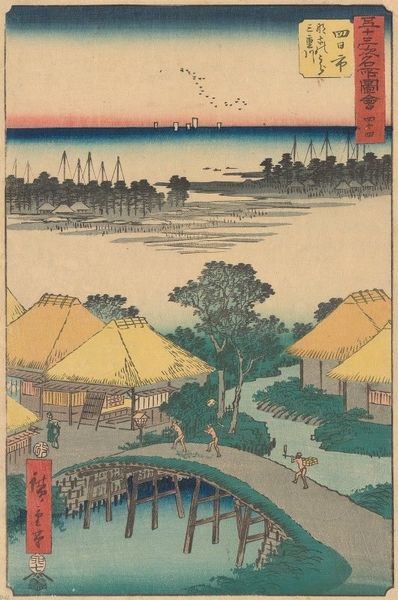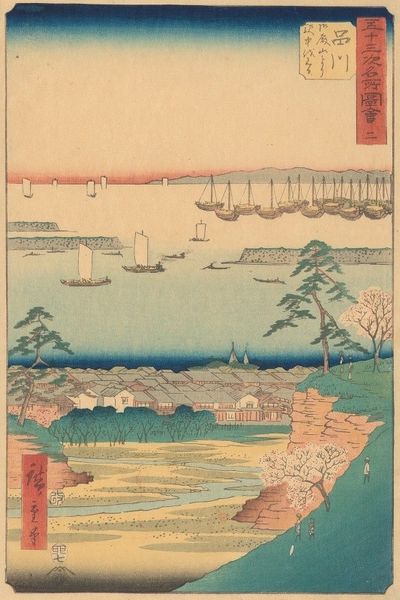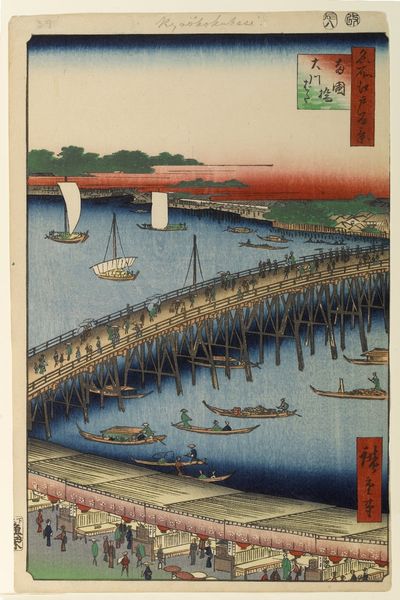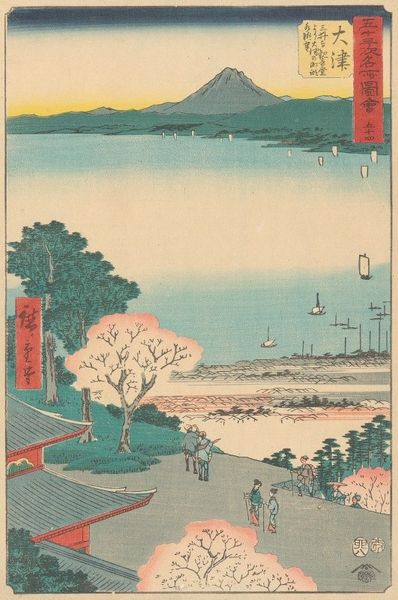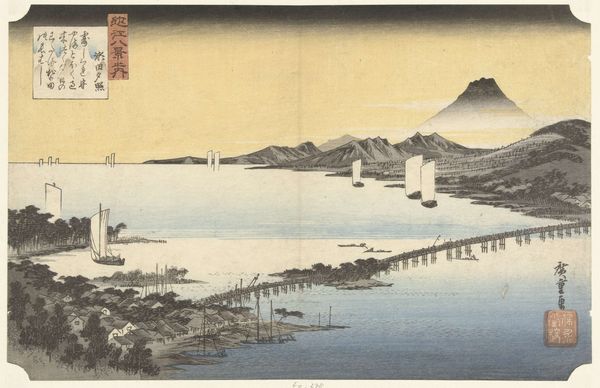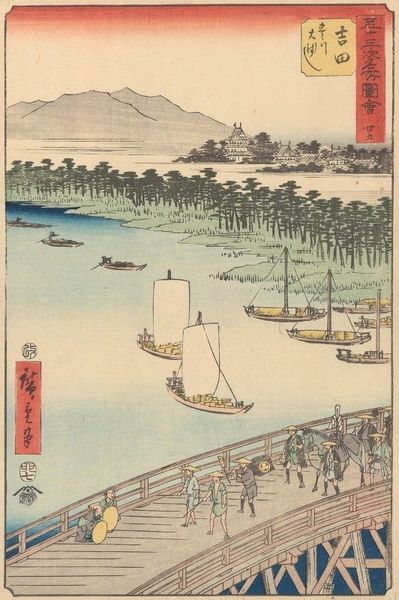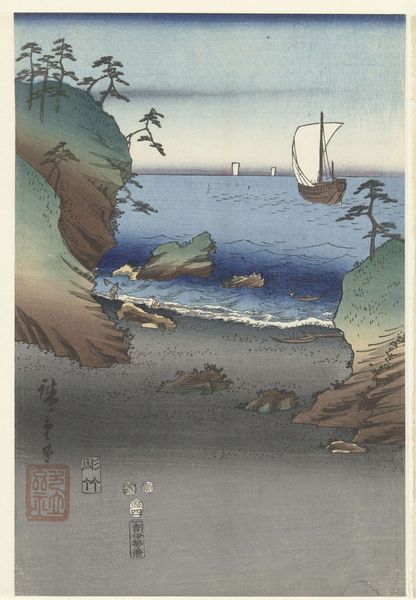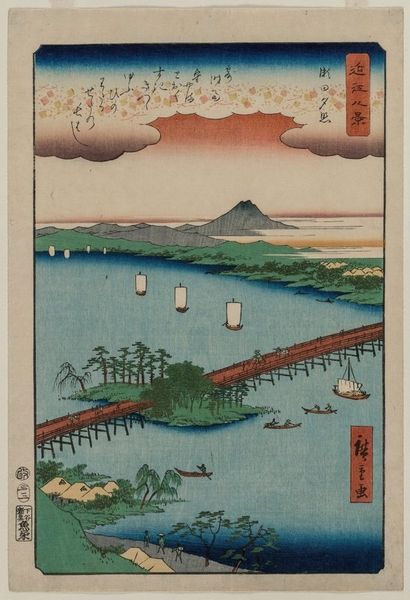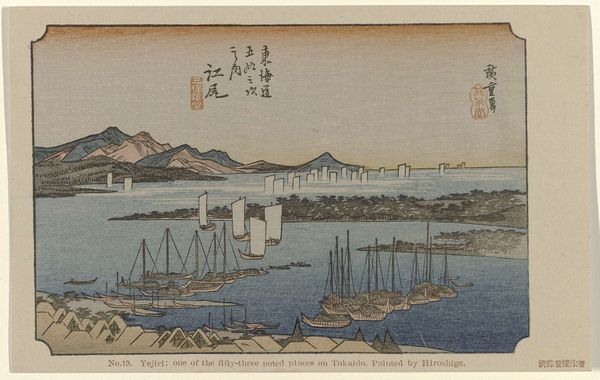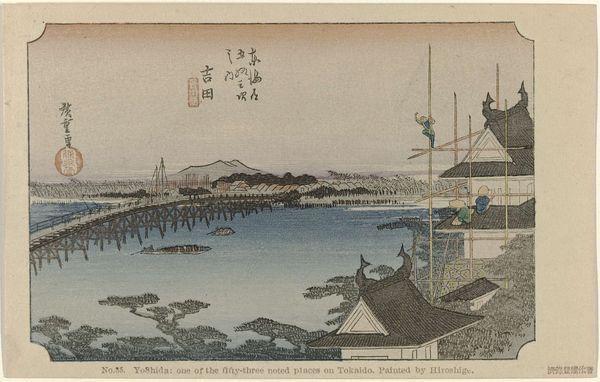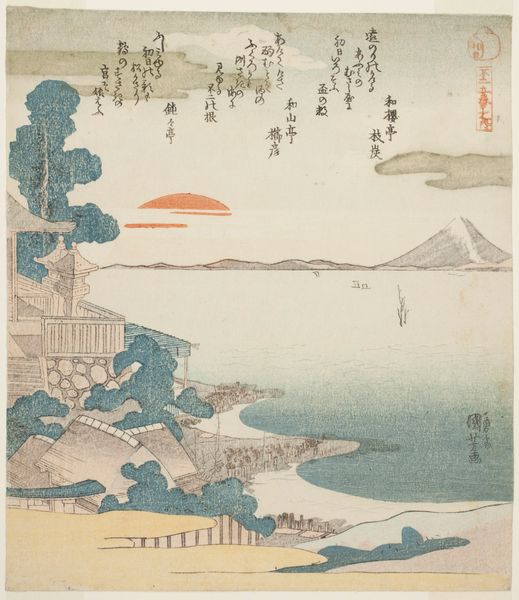
Copyright: Public Domain: Artvee
Curator: It's a funny thing, isn’t it? How something can feel both timeless and totally specific to its moment. Take this woodblock print by Kobayashi Kiyochika, “Itsukushima Shrine,” from 1897. The mist hangs there; it makes me feel as if the Gods will surface from under water any moment now... Editor: Yes! My first impression is how the very materiality is essential to the work, starting with its nature-centered worldview. Consider how the entire scene and shrine are utterly dependant on these foundational stilts firmly set into the seabed floor... and how human ingenuity relies so completely on the organic qualities of the lumber to bring this transcendental scene to life. Curator: I suppose Kiyochika found a bit of magic there too. He's called "the last Ukiyo-e master," bridging traditional Japanese printmaking with the incoming Western influences. So this scene, Ituskushima, its torii gate seemingly floating on the water, became something new. Editor: This reminds us, I believe, about production, commodification and Japonisme that exploded across European markets. There’s an echo here between raw material and spiritual significance; it all comes down to access—wood for the everyman versus divine wood for a transcendent gate—a portal, no less! Who has the economic means and power to lay claim to these resources? Curator: That reminds me; there's a story Kiyochika told. He was sketching one evening and caught sight of a streetlamp's light on the rain. Suddenly, he thought, ‘that's it! Light and shadow, the Western way,’ and devoted himself to that... which reminds me of what one of my favorite poets, Basho, once wrote: "seek not to follow in the footsteps of the wise; seek what they sought." I'd venture that Kiyochika sought his own kind of light. Editor: The question of the agency over labor, access, material value— it seems we see this constant back-and-forth embedded in Japanese society still—the reverence for natural process is certainly undeniable but so are the inescapable systems of exploitation... Curator: A print like this feels like such a testament to change—the way a single artist’s journey intersects with wider cultural shifts. We sense the artist trying to catch light just as the sun will burn a path to mark another day! Editor: Precisely—I mean, just look at that wood. And then ask yourself: Whose hands built it, felled it, and who decided what its worth was on that day, in 1897?
Comments
No comments
Be the first to comment and join the conversation on the ultimate creative platform.
